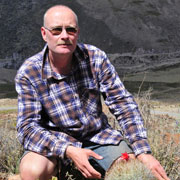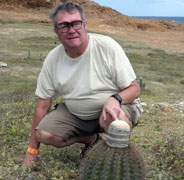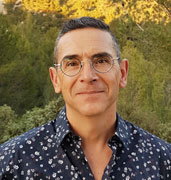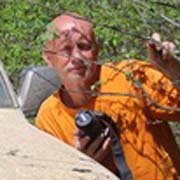Programme 8-9-10 September 2023
-
Day 1
-
Plant sales
-
Opening and lecture
Zlatko Janeba
Czech Republik

The best of the Southwest of the USA (en)
Zlatko is a chemist by profession and enjoys botany as a hobby. He has been engaged in study and cultivation of cacti and other succulent plants since about 1985. He enjoys all aspects of botany, especially taxonomy, ecology, physiology, genetics, and ethnobotany. He travelled extensively to both South America (Argentina, Bolivia, Chile) and North America (Cuba, Mexico, USA). He lived in the Southwest of the USA (Utah, Arizona, California) for 7 years, regularly visiting plant habitats. He enjoys photography a lot. He gives talks about cacti & succulents both in the Czech Republic and abroad (Austria, Italy, UK, USA). He published over 140 articles about cacti & succulents in various international journals, over 1030 color photos, and 33 photos on front covers of various journals. He grows various plants with a special interest in frost-hardy cacti & succulents.
Although interested in a wide range of cactus & succulent genera, Zlatko spent over 7 year in the Southwest of the USA (living in Utah, Arizona, and finally in California), which clearly mirrors his special interest in the local flora. He travelled extensively across the Southwest and took copious pictures (initially on slides, later on digital cameras). In his talk, he will share photos of various cacti & succulents and their habitats, with a great emphasis on the genera Pediocactus and Sclerocactus. He will finish the presentation with a few notes on cultivation of those frost-hardy cacti & succulents.
-
Cafetaria
Social gathering
-
Day 2
-
Plant sales
-
Lecture
Alain Buffel
Belgium

Melocactussen in habitat 2003-2023 (nl)
Melocacti in habitat 2003-2023
Even as a child, I was interested in everything that grows and blooms and when I bought my first set of cacti as a teenager, I immediately knew: that will never go away. Travelling was always in my blood too, and both passions turned out to combine particularly well. Other succulents also carry my interest away, with a certain preference for succulent trees. We are now several decades later and thanks to an extensive international group of friends, I can look back with a good feeling on some memorable crowded hobby greenhouse.moments with those fellow travellers. I have now been retired for several years and still take as much pleasure in sowing and caring for my favourite plants in a crowded hobby greenhouse.
Melocacti in habitat 2003-2023 When I travelled to Cuba in 2003, I saw Melocacti in their natural habitat for the first time. When the now defunct Italian magazine Cactus & Co was preparing a book on Cuban Melocacti, I was asked by acquaintances if some of my habitat photos could be used for the book, and so it happened with the publication of Melocacti of Cuba in 2007. We are now many years further on but the interest in these plants remained and this resulted in a number of visits to other countries with the intention of seeing the plants in their natural habitat. Through the photos I try to show you the conditions under which these plants survive.
-
Meeting International Euphorbia Society
-
Lecture
Marc Mougin
France

La culture des Conophytums (fr)
The culture of Conophytum
Marc Mougin 58 years old, veterinary surgeon. I live in the south of France where I have 2 tunnel greenhouses totalling 35 m2. I have been growing cacti since I was 12 years old and mesembryanthemum for more than 30 years. I was quickly fascinated by Lithops and my first trip to South Africa in 2005 reinforced this fascination. Since then, I have made 4 more trips to South Africa and 5 to Namibia, all focusing on succulents. My interest in Conophytum naturally followed my interest in Lithops. I have a large collection of Conophytum with about 460 references. I am also one of the main active members of the Conophytum, Lithops and Co. website, hosted by the Cactus Francophone.
For most succulent plant lovers, Conophytums are still a difficult genus to grow. In my lecture I will try to show and explain what makes the cultivation of these plants so special. Starting with a description of the genus and the environment in which they live, I will address the question of the substrate, the pots and above all the very particular life cycle. Of course, all these topics will be discussed based on my personal experience in the South of France in a Mediterranean climate. Propagation methods and diseases will also be discussed.
-
Lecture
Volker Schädlich
Germany

Auf der Suche nach Kakteenzwergen - eine Reise in 5 Länder Südamerikas (de)
In hunt of cactus dwarfs - a journey to 5 South American countries
Up to my first trip to South America in 2001, I had no idea where and how Fraileas could be found in the wild. Besides, my main interest had been the genus Gymnocalycium ever since I started collecting more than 40 years ago. I found my first Frailea in the Chaco of Paraguay, of all places. My curiosity and interest in these plants were aroused.
The huge distribution area of the genus Frailea reaches from Brazil (Rio Grande do Sul), Uruguay (most of the country), the eastern lowlands of the province of Chiquitos in Bolivia, the northern and south-eastern (Cordillera de los Altos) Paraguay to Argentina (provinces of Córdoba, Corrientes, Entre Ríos, La Pampa, Santa Fe).
In this talk, I am pleased to introduce you to the distribution of this interesting genus on the basis of sites I have visited. You will gain an insight into the often-different ecosystems of the genus. Perhaps I can encourage you to get involved with these beautiful plants and cultivate them in the collections.
-
Cafetaria
Social gathering
-
Day 3
-
Plant sales